When developing material for bonsai, it’s best to avoid creating straight trunks and branches. Many varieties, however, naturally produce straight growth. This gives us two options: cut or wire.
Cutting is often preferable to wiring as cuts can be used to create taper and angular movement. Wiring has its place too as it’s a quick way to put a branch where you want it.
I’ve been working on some cutting-grown plums by cutting and wiring select branches once or twice a year (see photos from the last cutback here). I enjoy this work as the idea is to give the trees qualities we appreciate in bonsai, like taper and movement, without following a specific plan. Here’s what this work looks like.
Cutting-grown plum
The shoot that emerges from the soil isn’t helping the design so I’ll cut it off. Likewise the shoot that grows downward from the inside of the curve.
After pruning
I left a single sacrifice branch on the back of the tree to help thicken the trunk but plan to remove it in fall to avoid a knuckle from forming.
The tree below is a great example of what happens if you don’t wire shoots when they’re young and supple. You end up with long, straight shoots that don’t help the design.
Long, straight shoots
Here’s a close-up of the three branches that emerge from the top of the trunk. As wiring isn’t an option, I’ll make some cuts.
Three branches emerging from the trunk
After cutback
After a while, the work becomes automatic and the straight sections start to disappear.
Young plum
Before cutback
After removing the straight sections
Here’s a similar example.
Before cutback
After cutback
A big reason to prune more than once a year is to discourage growth that doesn’t contribute to the overall design. On the tree below, a new shoot emerged near the base of the trunk. Because it has no curves, I’ll have to remove it. Had I noticed this earlier, the other shoots on the tree might have more vigor.
The shoot at the right is the strongest section of the tree
Close-up showing the strong shoot
After removing the strong shoot at the base of the trunk
Higher up on the trunk I found a shoot that’s creating a large knuckle.
Knuckle forming at the base of a shoot
After removing the shoot and reducing the knuckle
Near the top of the tree, a branch I’d previously wired showed unsightly swelling. This too will come off.
Swelling caused by wire scars
After reducing the branch with wire scars
After making a few cuts, I noticed that the remaining branches were too straight to use without wiring.
Straight branches
As now’s a great time to wire deciduous varieties, I added some movement.
After wiring the new leader
I’ll revisit the trees again in fall, and likely in a similar fashion over the next several years. At some point I’ll have to make some decisions about how large I want the trees to become, but in the meantime, I can encourage as much growth as possible and continue making periodic adjustments.
Read other posts from the Bonsai Development Series here.
Subscribe to Bonsai Tonight
New Posts Delivered Every Tuesday and Friday
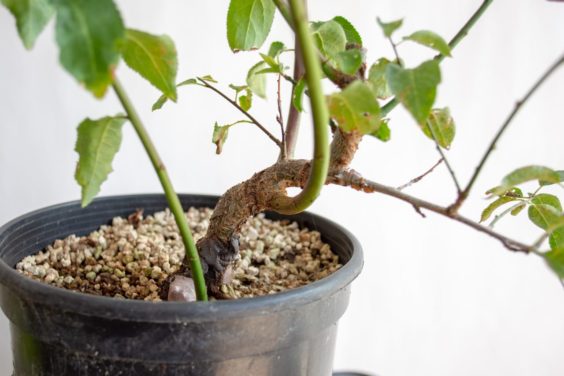
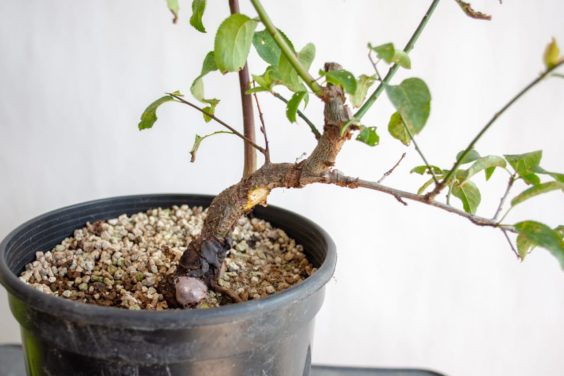
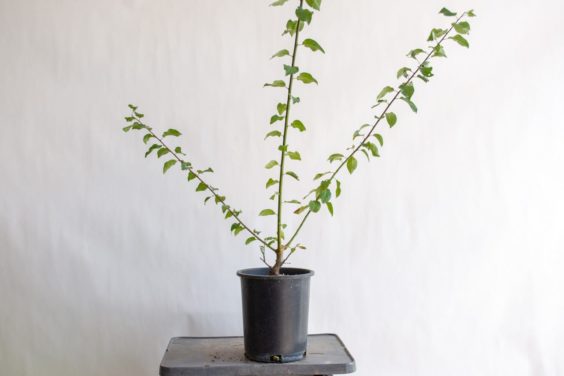
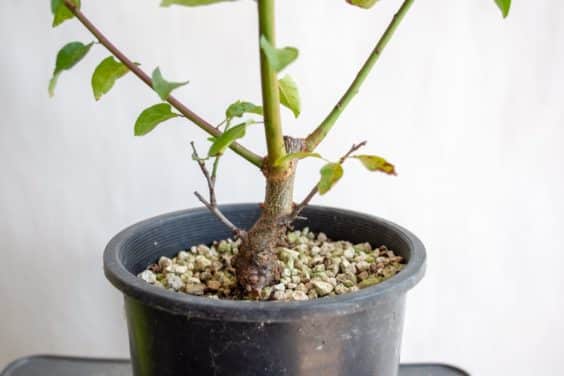
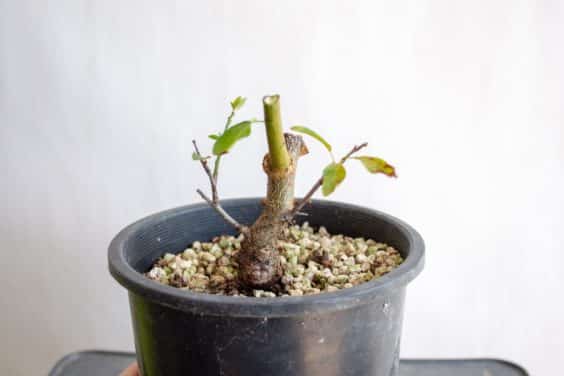
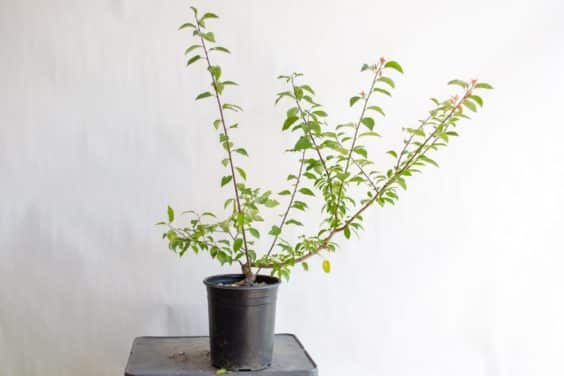
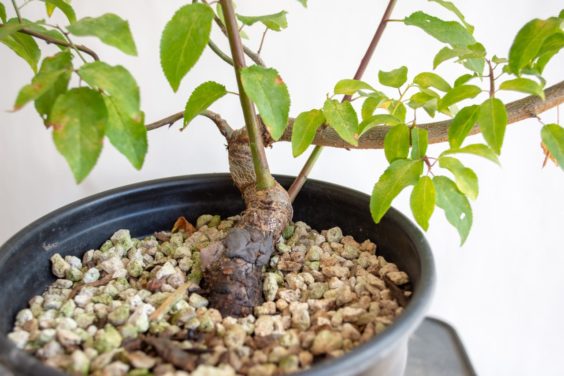
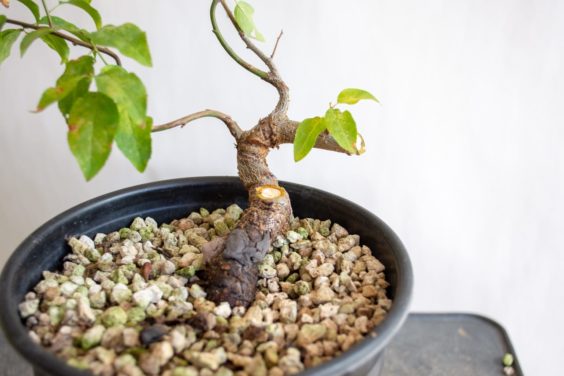
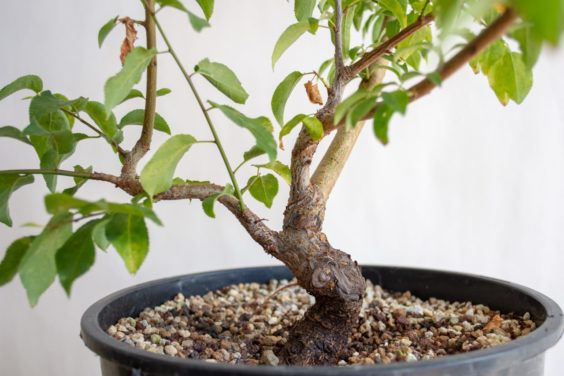
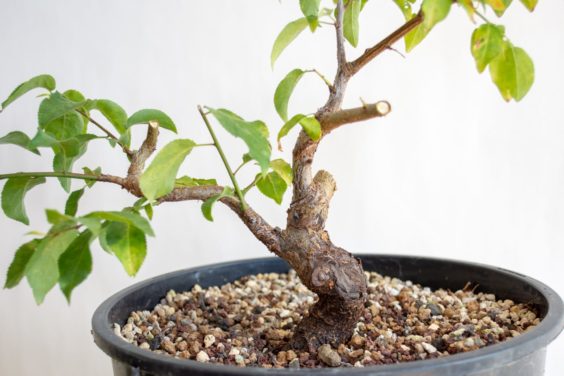
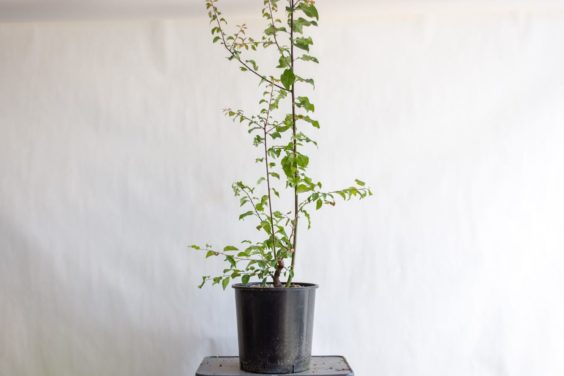
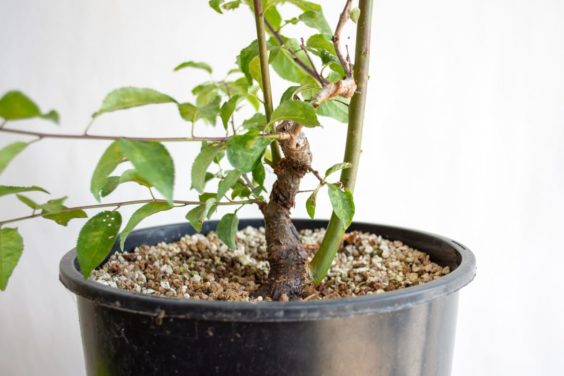
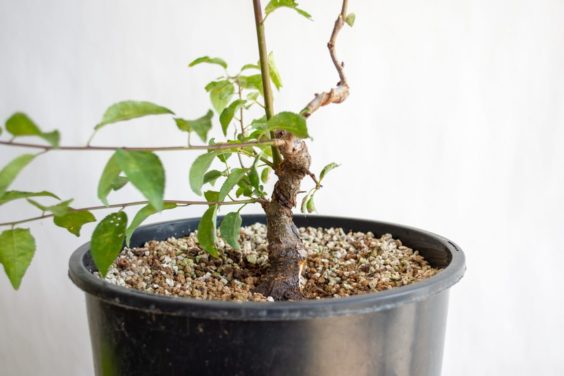
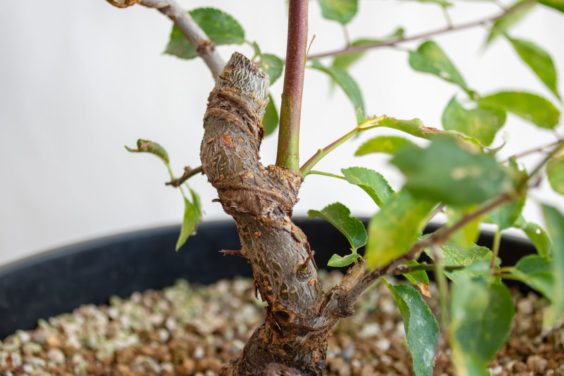
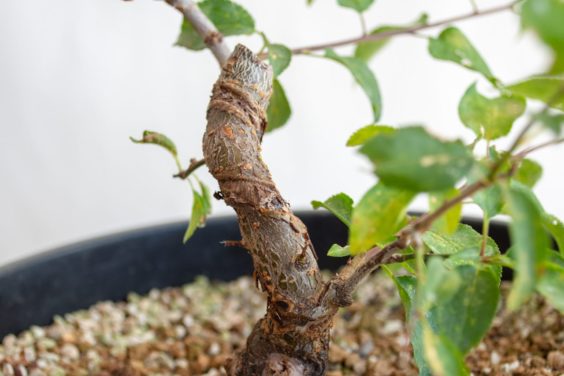
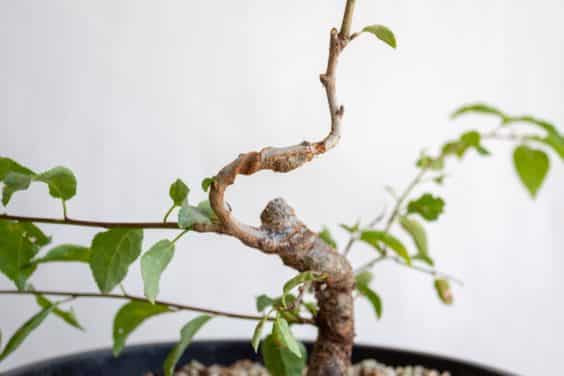
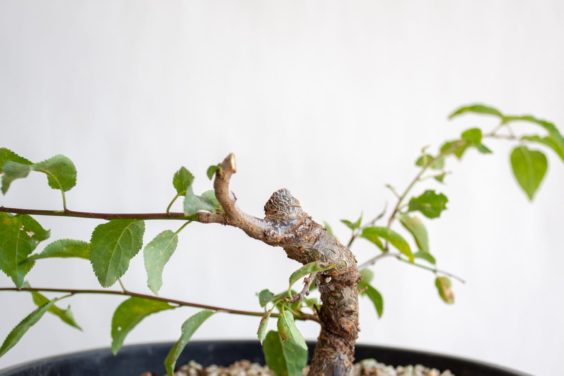
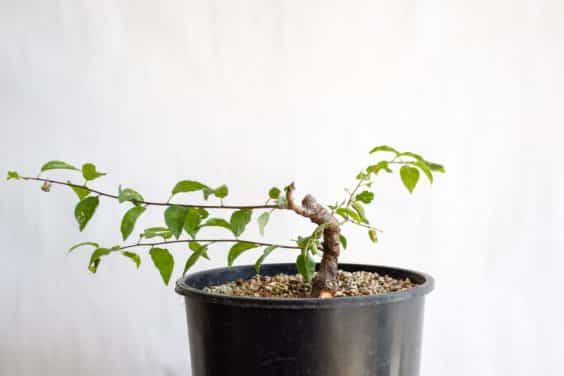
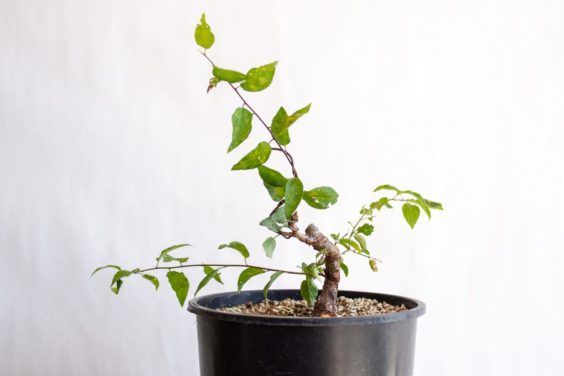
Lars says
Jonas, another great post. On some deciduous in a similar stage of development I notice that the first internode ends up being very long. Since I am pushing so much growth at this stage I get the thickness that I want, but at the cost of a long first internode so I can’t cut back to anything. This would obviously only be a problem for shohin or chuhin sized trees. Have you noticed this problem and if so have any ideas to combat it? I have considered pinching the very first growth to get a small first internode and then let it run very strongly.
Jonas Dupuich says
Thanks Lars – and great question! I can think of a few approaches to starting deciduous trees with shorter internodes. If you’re growing the trees from seed, you can try the seedling-cutting technique. Removing the taproot and making a cutting of young seedlings can yield very short internodes. And if you’re growing trees from cutting, starting with material that has short internodes can be a good way to go. Some varieties like trident maple develop best from air layer as this yields great taper at the base of the trunk. And for varieties like princess persimmon or chojubai, root cuttings are the best starting point.
I hope helps!
Michael Jensen-Akula says
Great post as usual. You seem to be able to think out loud, and rationalize your steps better than anybody. However you seem to say that you do all this first and later decide how big you want the tree to be. This lovely fine tuning seems perfect for a shohin, However i have usually left much of the larger branches on, simply to attain girth, thinking that these 2mm nuanced bends would be mostly ‘lost’ if it were a 2 inch trunk. When do you decide on size, and how does the trade off between growth and nuance affect these decisions of yours? Thanks!
Jonas Dupuich says
Thanks Michael. Getting the curves right is the main thing I pay attention to in determining the overall size of the tree. I’m OK with the small curves disappearing over time, but if I grow new sections of the trunk I make sure to incorporate some changes of direction. I’m erring the side of removing sacrifice branches while they’re small on these trees as they might be small and I’d like to avoid larger scars as much as possible.
Robert Barnes says
Without knowing a whole lot about the subject myself, it seems like it will be difficult to obtain taper unless you let the sacrifice branches or leaders run to 1-2 inches thick prior to removal.
Jonas Dupuich says
Hi Robert – you’re exactly right. To create more taper you need either larger sacrifice branches or more sacrifice branches. If I want to keep these trees small, I’ll continue using smaller sacrifice branches. I can develop taper more quickly with larger sacrifice branches, but at the expense of larger scars and awkward swelling/knuckles. I generally think of plums as having more gradual taper so I’m not aiming for the fast taper we sometimes see in pine bonsai. Thanks for the comment!